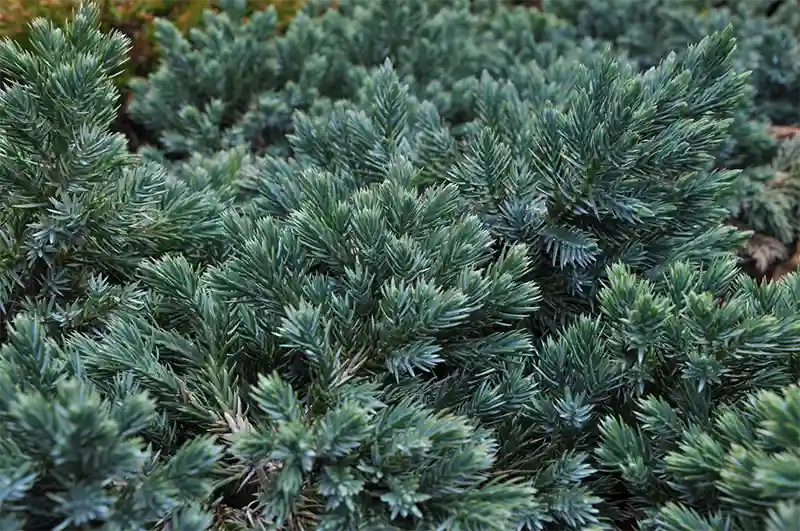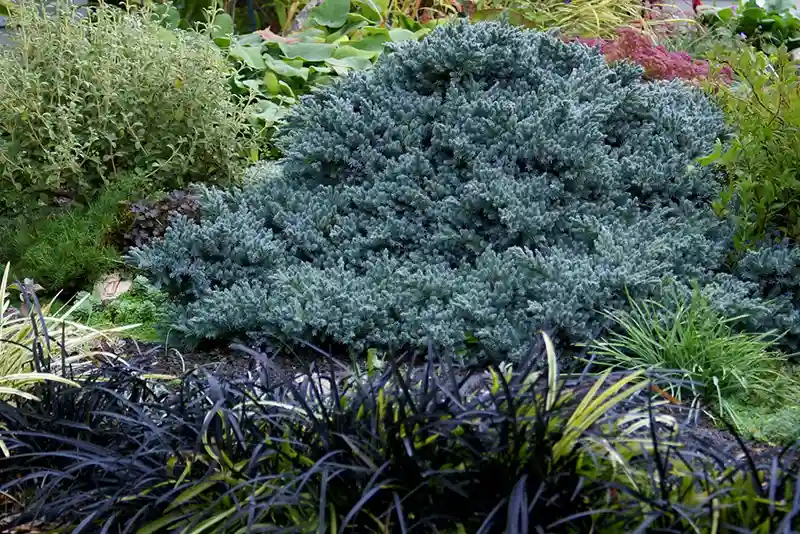Blue Star Juniper Bonsai Care Sheet
Juniper trees are among the more common choices for bonsai. After all, these trees are known for their incredible foliage and compact growth habit, as well as for being easy to take care of—all desirable traits in a bonsai.
Formally known as Juniperus Squamata, the blue star juniper is an elegant silver-blue needle conifer. The blue star juniper is an excellent choice for anyone who wants to add a juniper bonsai into their collection. Luckily, this plant isn’t too tricky to care for, as long as you know a few basic things about this plant’s needs.
 Image
courtesy of ShareAlike 3.0 Unported
Image
courtesy of ShareAlike 3.0 Unported
Here are the points we will cover:
Here are the points we will cover:
01
02
03
04
Quick Blue Star Juniper Bonsai Sheet
Recommended soil
Light sandy soil more towards alkaline pH
Watering
Low watering requirement
Potting season
Every two years
Shaping and pruning season
Spring and summer
Light
Direct sunlight
Fertilizing
Spring or autumn
Propagation methods
Cutting
Pests and diseases
juniper scale, spider mites, juniper needle miners, juniper webworms, and juniper aphids, fungal rust disease, root rot, and blights
How To Care For A Blue Star Juniper Bonsai
When it comes to caring for any bonsai, there are several categories to assess. Here are the top care requirements for a blue star juniper bonsai.
Watering Requirements
Juniper is a drought-tolerant plant, meaning that it has reasonably low watering needs. A blue star juniper bonsai can’t afford to get too wet. Its roots are ill-equipped to handle waterlogged soil and consequently are at high risk of either being damaged or suffering from root rot in an overly wet environment.
The soil around your bonsai should be somewhat dry before you water it. Misting your blue star juniper regularly may be beneficial, especially during winter or shortly after repotting, since the increased humidity in the air would be particularly helpful in such situations.
Lighting Requirements
While the bonsai might not need much water, it absolutely does need a lot of light. A blue star juniper requires direct bright sunlight for most of the day. For this reason, your blue star juniper bonsai will be happiest if you keep it outside.
Repotting Requirements
A juniper bonsai tree doesn’t need to be repotted frequently–no more than once every two years. If you decide to repot your juniper bonsai, take care not to prune the roots very heavily when you repot, since doing so may shock the plant. Repotting should ideally be done during the spring, though you can also repot during the autumn if it proves strictly necessary.
Soil Requirements
A blue star juniper bonsai generally favors light sandy soil, preferably with some alkaline content. However, a blue star juniper is a sufficiently forgiving plant that it will still do well in other soil types. The one non-negotiable requirement is that the plant needs a well-draining soil.
Pruning Requirements
While juniper bonsai can handle aggressive pruning well, pruning is still a task to be approached with some care. Pruning a juniper bonsai should ideally be done during its active growing period, which is in the early spring and summer.
It is critically important to avoid trimming your blue star juniper. Cutting will kill the surrounding needles and may weaken the bonsai tree as a whole. Instead, we’d advise you to handle pruning by pinching back growth. However, you should make sure to leave some foliage on the branches to encourage future growth since the bonsai won’t be able to bud again from any bare tree parts.
Fertilizing Requirements
Juniper bonsai like to be fed regularly in the spring or autumn. We suggest using either a liquid fertilizer (to be applied every week) or a monthly application of a slow-growing organic fertilizer. You can also try employing a nitrogen-rich fertilizer during the spring if you’d like to encourage growth.
However, it’s best to let the tree rest throughout the summer. You should also avoid fertilizing your bonsai if it has been repotted less than a month ago. If the plant has been repotted too recently, you may shock the roots.
Location and Temperature Requirements
A juniper bonsai vastly prefers to be kept outdoors. Avoid keeping this bonsai inside since it can’t tolerate high humidity or heat levels. Juniper is a sturdy plant; it can handle temperatures as low as 15 degrees Fahrenheit (-10 degrees Celsius) even if you don’t take steps to shield it from the cold. If the temperature drops below that threshold, however, your blue star juniper bonsai will need you to establish at least moderate protection.
Common Concerns With Blue Star Juniper
A well-tended juniper is usually fairly resistant to pests. However, they can still fall prey to certain pests, including juniper scale, spider mites, juniper needle miners, juniper webworms, and juniper aphids. Your bonsai will need to be checked regularly for pests year-round.
You can help prevent pests from settling in your plant by ensuring that the foliage pads don’t become too thick. If your juniper bonsai does become infested, you can treat it with the standard miticide or pesticide. However, in the long term, it may be more effective for you to locate and treat the underlying reasons that caused your tree to be vulnerable than simply address the infestation itself.
A blue star juniper bonsai may also be susceptible to certain diseases. Of these, fungal rust disease, root rot, and blights like phomopsis twig blight are among the most problematic. These conditions can kill or cause permanent damage to your juniper bonsai.
Root rot can generally be avoided by ensuring that your bonsai has access to good drainage and doesn’t suffer from overwatering. If your bonsai develops root rot anyway, your best chance is to remove the diseased root sections.
Similarly, you should be able to strongly discourage twig blight simply by avoiding placing the bonsai somewhere with insufficient sunlight or poor air circulation and ensuring good drainage. Browning or diseased branches in an infected plant should be swiftly pruned.
Pruning is likewise your best shot of dealing with fungal rust, though in this case, it is the galls caused by the disease that you want to remove, rather than the branches. A fungicide is also an option with all of these diseases, though fungicide tends to work best as a preventative, rather than as a course of treatment in and of itself.
Image courtesy of 4.0 International
Fun Facts
- Blue star juniper gets its name from its bluish coloring and the shape of the top needles, which look a bit like a star when viewed from above.
- The blue star juniper originates as a sport (a genetic mutation) of another Juniperus Squamata variant, known as Meyeri.
- The coloring of the blue star juniper shifts according to the season. In summer, the plant will be a blue-green shade, which gradually shifts into the silver-blue coloring of winter.
- Other common names for this plant include singleseed juniper, flaky juniper, and Himalayan juniper.
- This juniper plant is native to Afghanistan, the Himalayas, and China.








